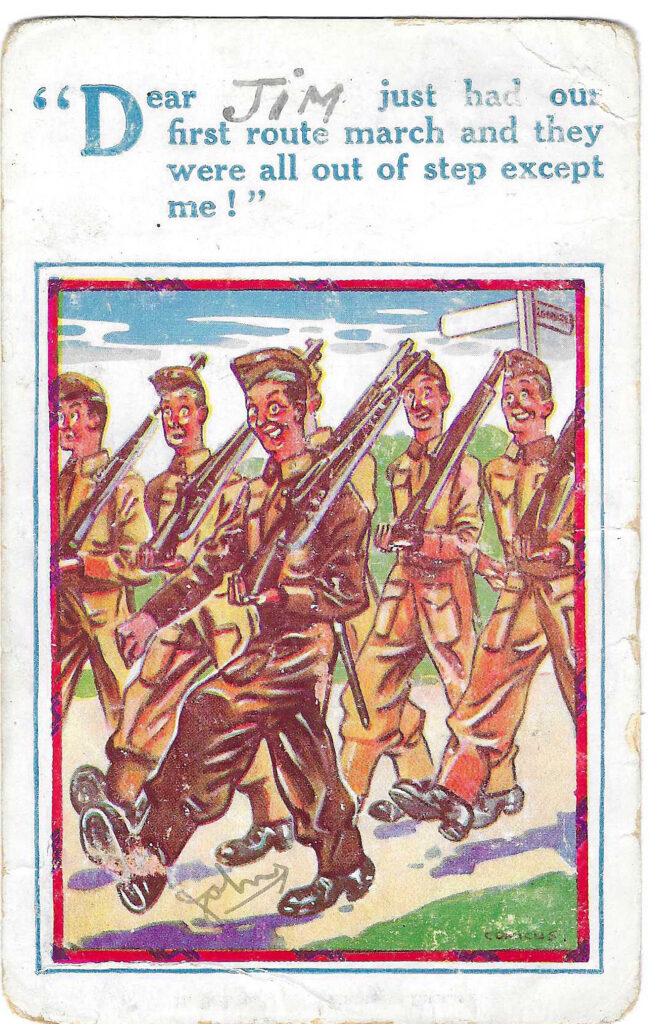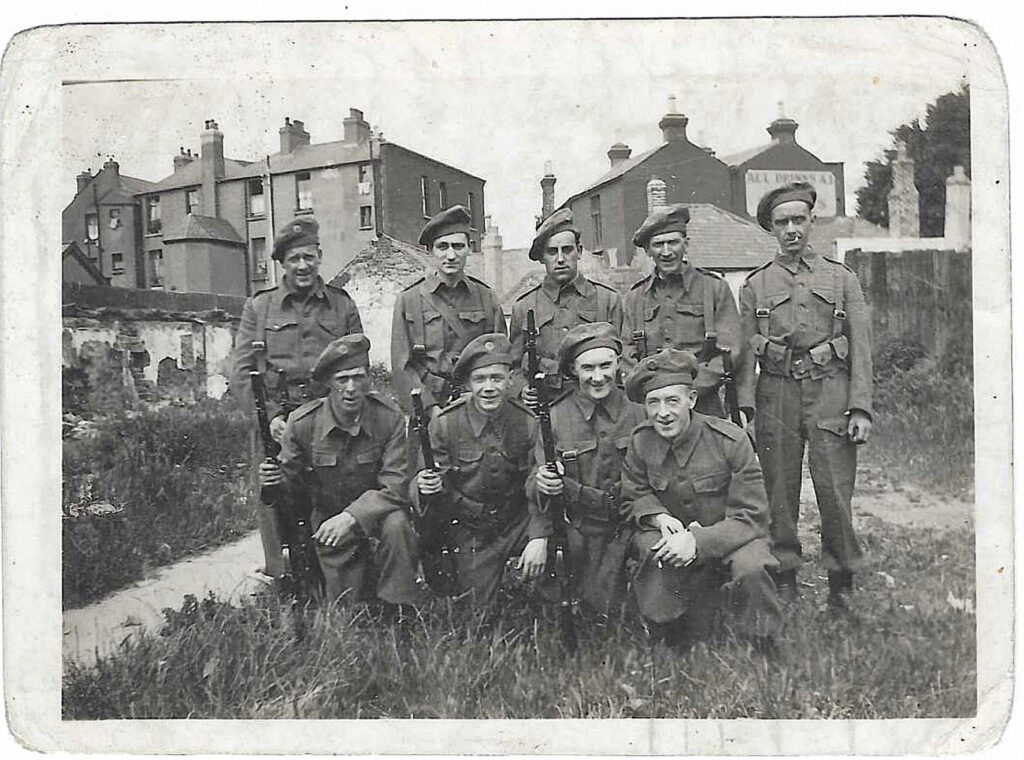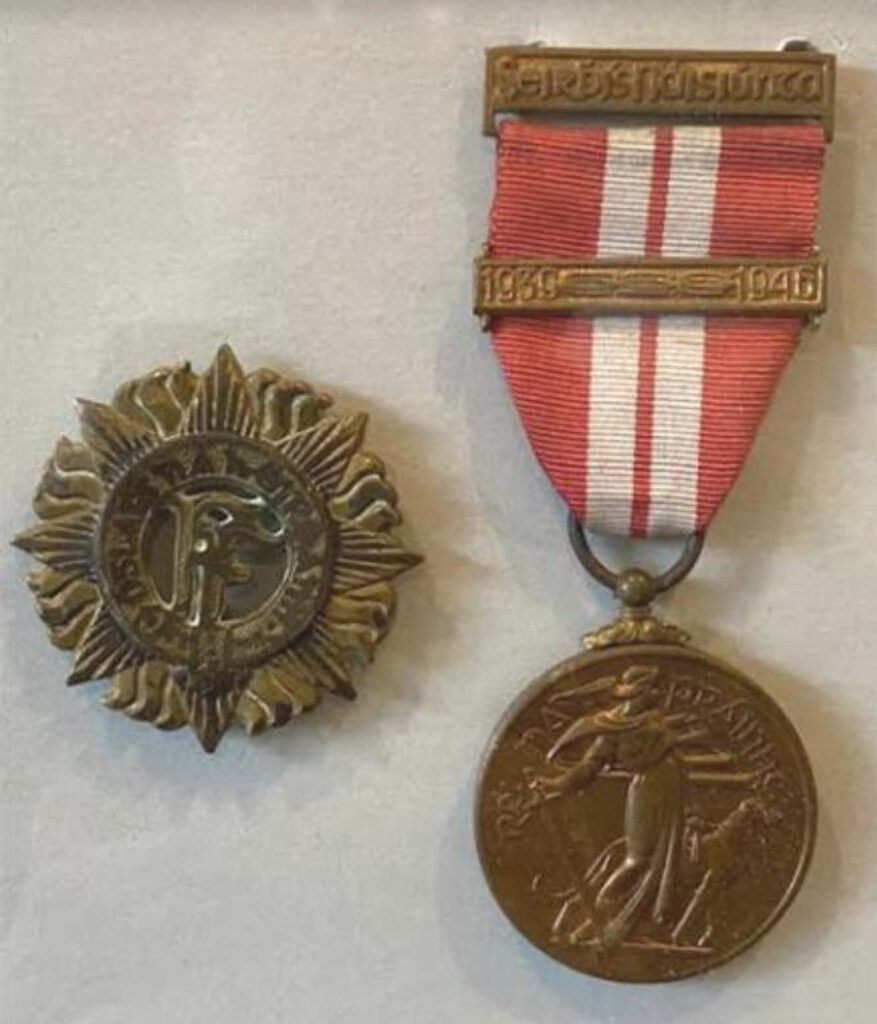By Pat Dargan

By 1941 the army authorities had completed the organisation of the permanent defence forces and they turned their attention to assuming full control of the LSF. It was incorporated into a national defence force and renamed the Local Defence Force (LDF). The new force was organised into battalions, usually on a geographical basis. Three battalions were raised in Dublin—the 43rd, 44th and 45th Infantry Battalions, subdivided into companies and platoons.
PRIVATE JOHN KEANE
John Keane was one of the individuals who enlisted and he kept a diary of his experiences during the Emergency (on which this article is based). He was born in Ballymacward, Co. Galway, in 1910 and in 1933 he moved to Dublin, where he took up employment as a barman. He seems to have followed political events in Europe with some interest, as his papers include a cutting from the Dublin Evening Mail, dated 26 September 1938, on the Sudetenland crisis. Keane joined the LSE as a private soldier in 1940 and a contemporary photograph shows him standing in his well-fitting LSE uniform outside his home in Grantham Street, Dublin. The uniform was made of brown denim-like material and consisted of a waisted tunic, plain trousers and a side field cap. The tunic had a buttoned-up collar, breast pockets and epaulettes. During the early period of the Emergency Keane received a cartoon picture postcard from a fellow member, illustrating a file of marching LSE men with one figure out of step (p. 50). The sender had humorously added John’s name beside the out-of-step marcher.
On the reorganisation of the force into the LDF Keane was assigned to D Company of the 44th Infantry Battalion, based in Cathal Brugha Barracks in Rathmines. He was issued with a new uniform that was similar to the earlier LSE one and included a coarse green bull’s-wool belted tunic with pockets. The trousers were different in that they included a large patch-pocket on the left leg. In addition, the uniform included short leather leggings and heavy boots, and the field cap was replaced by a Glengarry-type beret (p. 51). The beret featured a standard brass army cap badge in the form of a sunburst, inscribed with the ‘FF’ (Fianna Fáil) emblem—the only part of Keane’s uniform to have survived. From another of Keane’s photographs it is possible to identify the Lee Enfield .303 calibre rifle and the First World War webbing shoulder-straps and ammunition pouches issued to LDF members.

The LDF members were required to attend infantry training on a one-night-a-week basis, in addition to occasional weekend training sessions. The troopers were also required to attend a full week’s training camp each summer. As part of their infantry training the members of the battalion attended classes in military tactics, details of which Keane carefully recorded in a small notebook during 1941 and 1942. The topics covered include small-arms drill, aircraft recognition, establishing roadblocks and ambushes, as well as hygiene and sanitation. Keane’s notes on aircraft recognition are particularly detailed and include the characteristic and identifiable features of fighter planes and dive-bombers.

The battalion weekend camps were usually held in Gormanston Camp in north County Dublin. The battalion assembled initially in the barracks and marched to and from the camp. Keane often repeated the story to his family of how the battalion was issued with new boots just prior to a march to Gormanston. On the day of the march the weather was particularly poor and it rained for most of the day. Keane recalled that the rain was so intense that the lunchtime stew served from the camp kitchen was washed off the plates almost it soon as it was served up to the men. This, however, was the least of the day’s worries, as the combination of new boots, the length of the double march and the rain resulted in very sore feet indeed. Keane was particularly affected as he had to spend the greater part of the following day working in the bar with very sore and blistered feet.
The LDF also took part in ceremonial duties. In 1944 the battalion mounted a guard of honour for Archbishop John Charles McQuaid when he attended the centenary celebrations at St James’s Church in Dublin. The Evening Herald reported on the event and featured a photograph of the parading guard in the issue of 22 May. Keane was included in the photo, a copy of which he retained. In addition to infantry training, inter-unit competitive games were encouraged. Another of Keane’s photographs includes the members of the D Company team (including Keane) who were winners of the army football competition in 1942/3.
The closest Keane came to military action was in January 1941, when he was awakened during the night by the sound of air-raid warning sirens. He donned his uniform and rushed to the scene of a bombing that had taken place on the South Circular Road, adjacent to where he was living. It subsequently transpired that the German Luftwaffe had accidentally bombed two houses on the street. There was some damage and a number of people had been injured, but there was no loss of life and Keane’s efforts were confined to helping tidy up. The incident was one of several accidental wartime German bombings in Ireland, for which the German government eventually issued an apology and sent their condolences for the damages caused.
AFTERMATH
In the event Ireland never went to war, so the LDF military training and experience went untested. Following the Emergency the LDF was scaled down. The 44th Battalion was stood down and Keane was discharged, having successfully completed his tour of duty. In 1949 he was awarded the Emergency Service Medal. This featured a red and white ribbon, two bars and a bronze medallion in the form of a sunburst. This effectively brought to a close John Keane’s involvement in Irish military matters.
Pat Dargan is a retired lecturer in spatial planning in the Technical University of Dublin and author of Kilkenny: city of heritage (Eastwood Books, 2019).
Further reading
Sgt E. Stanton, ‘The FCA’, An Cosantóir (October 1984).
